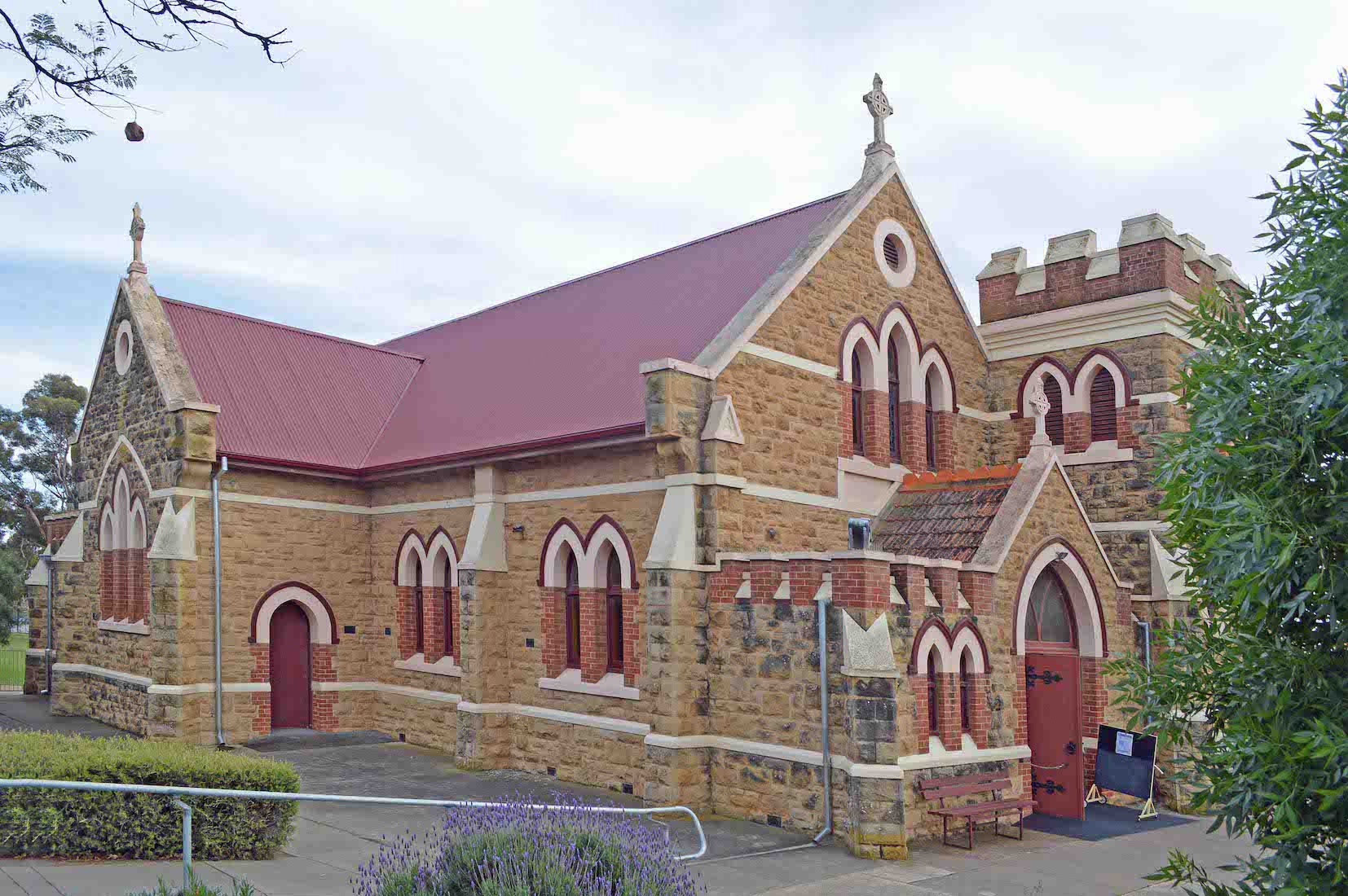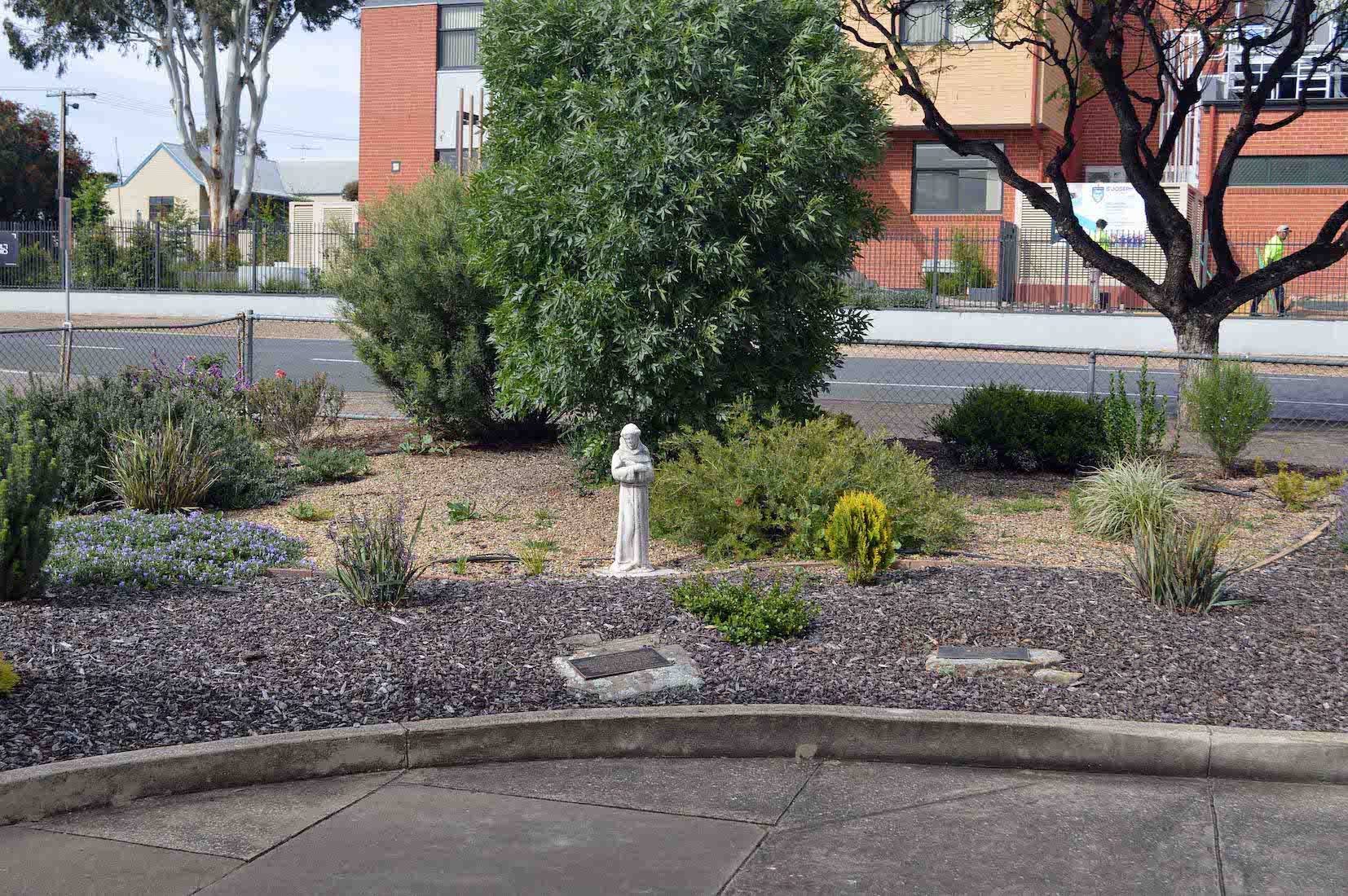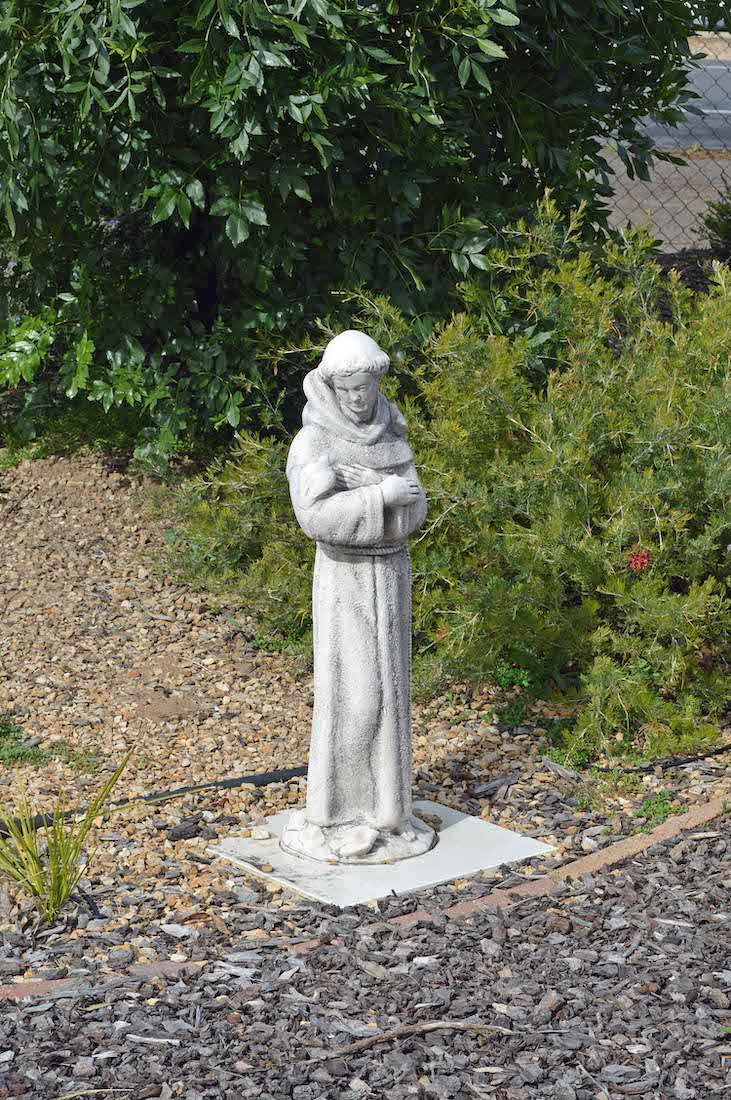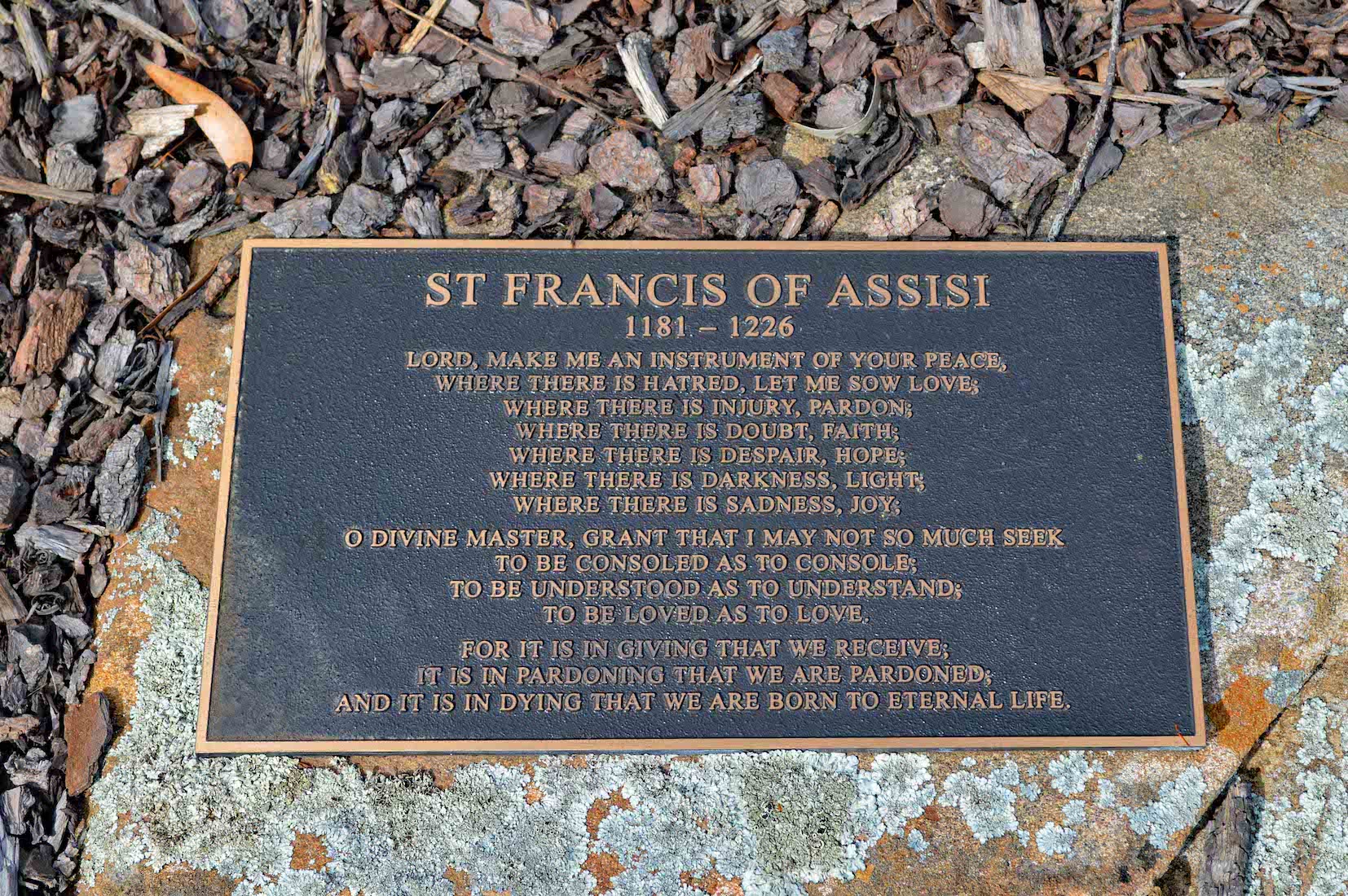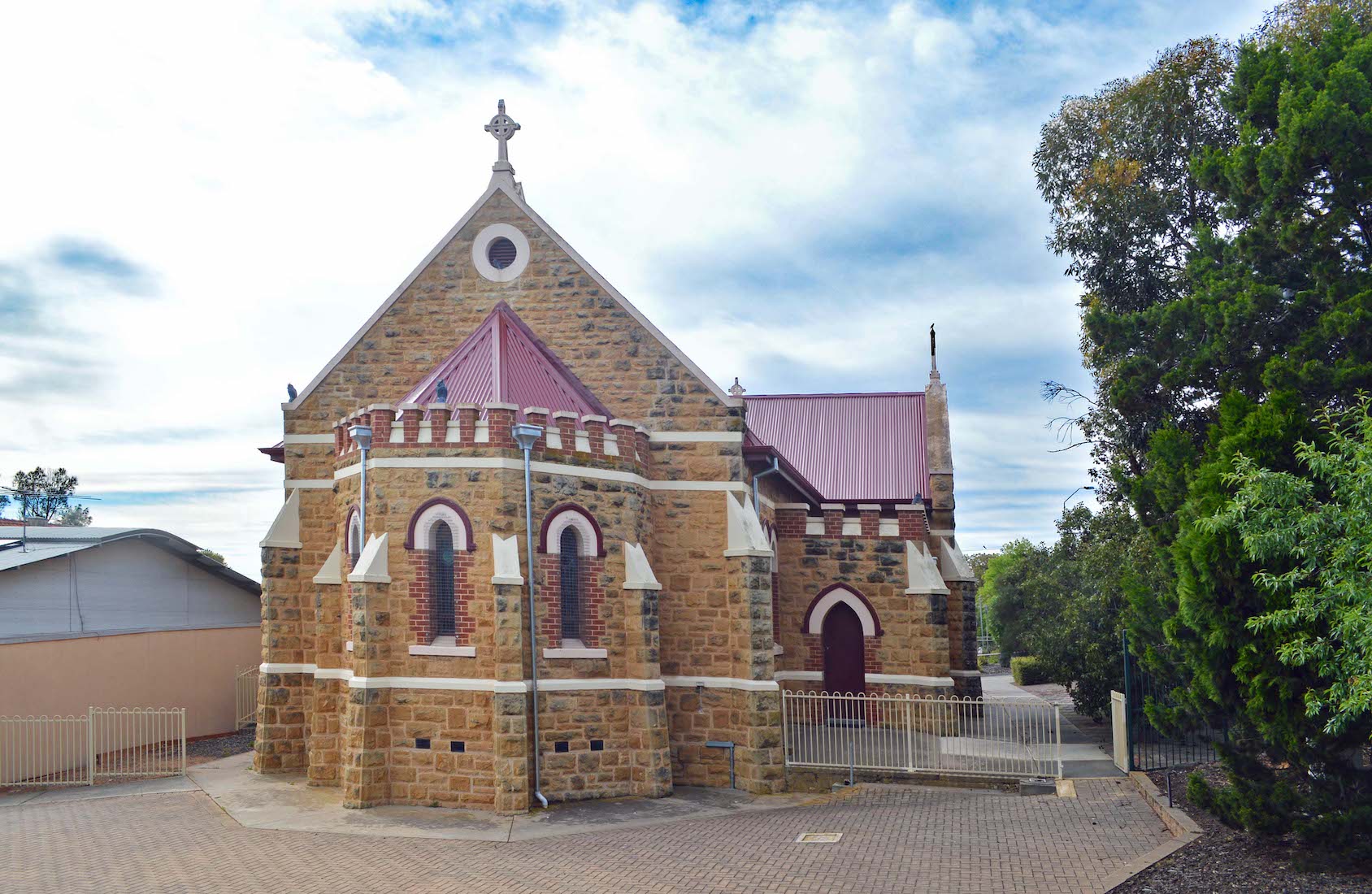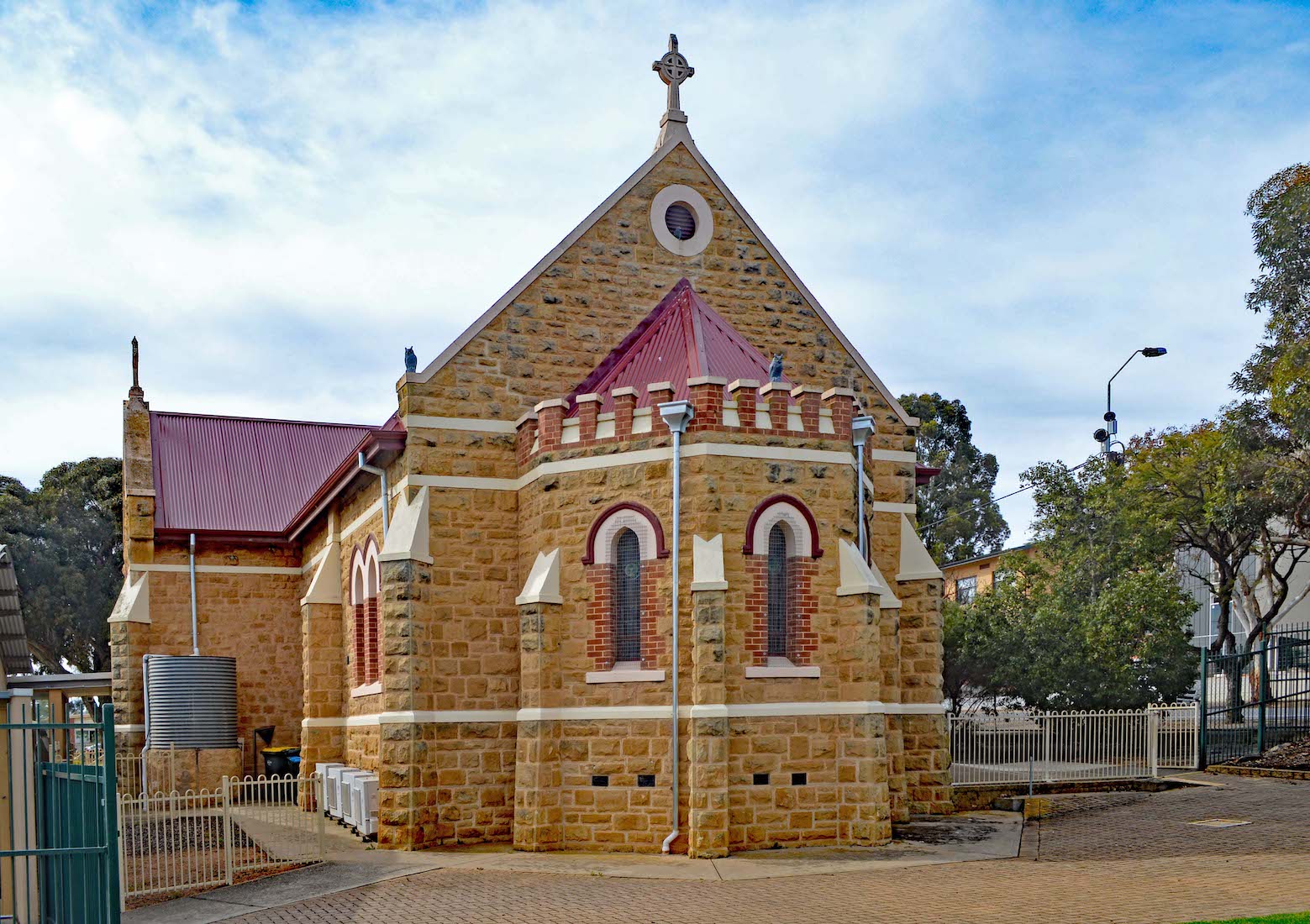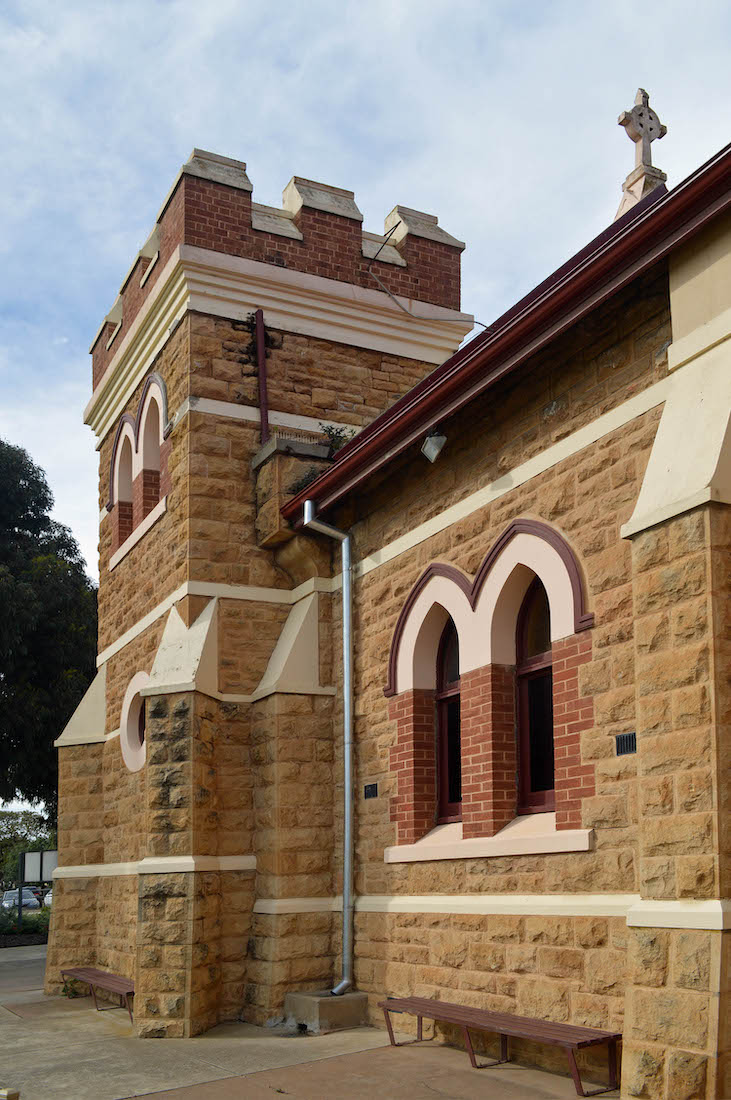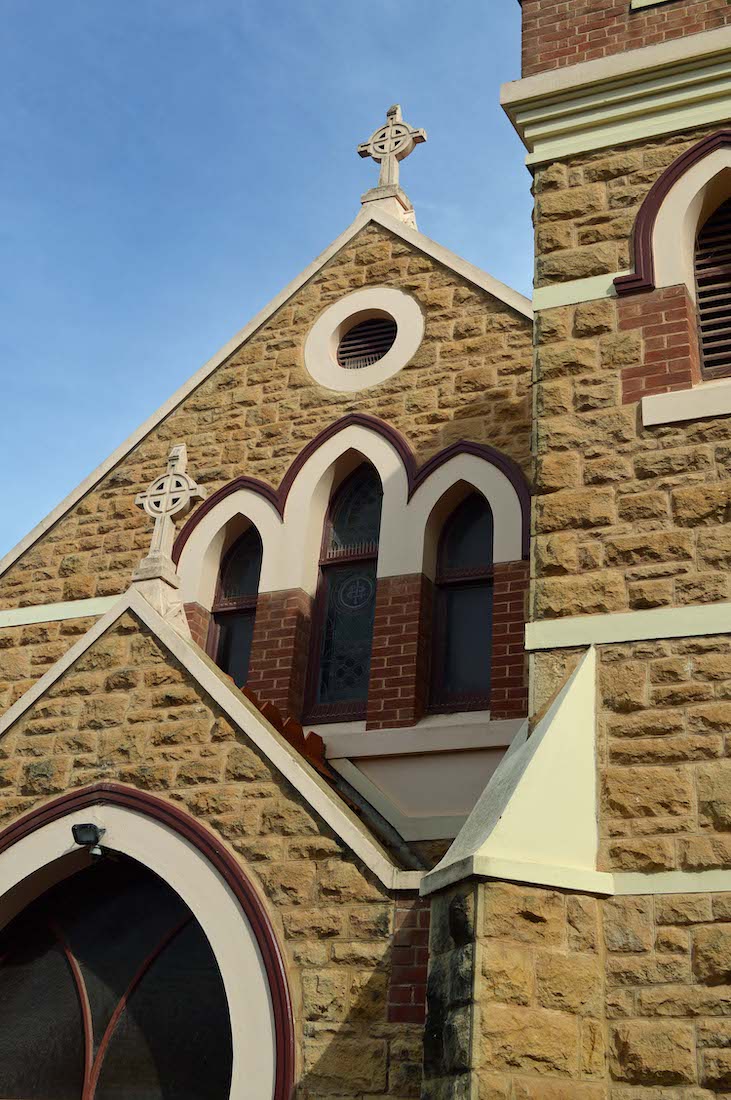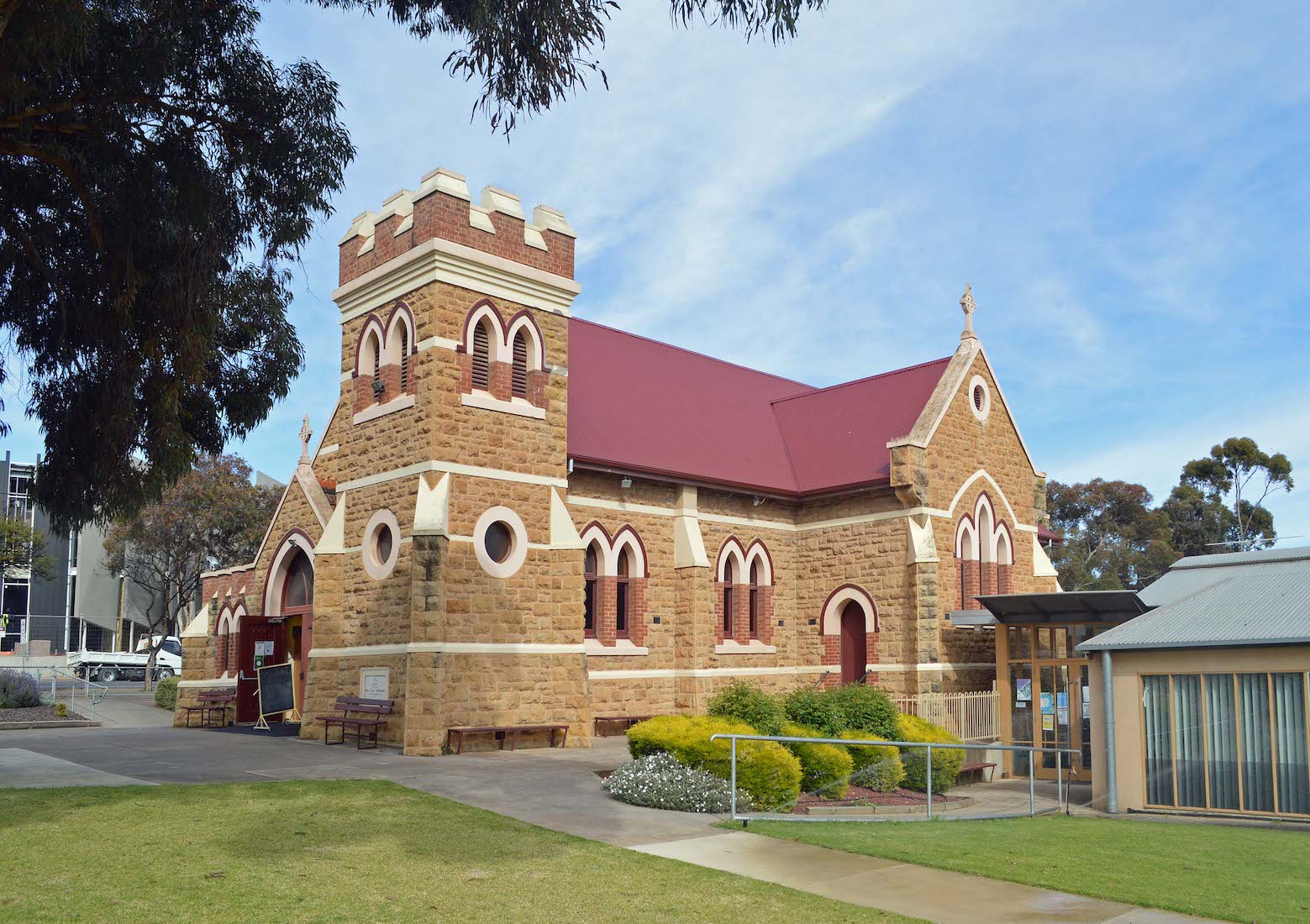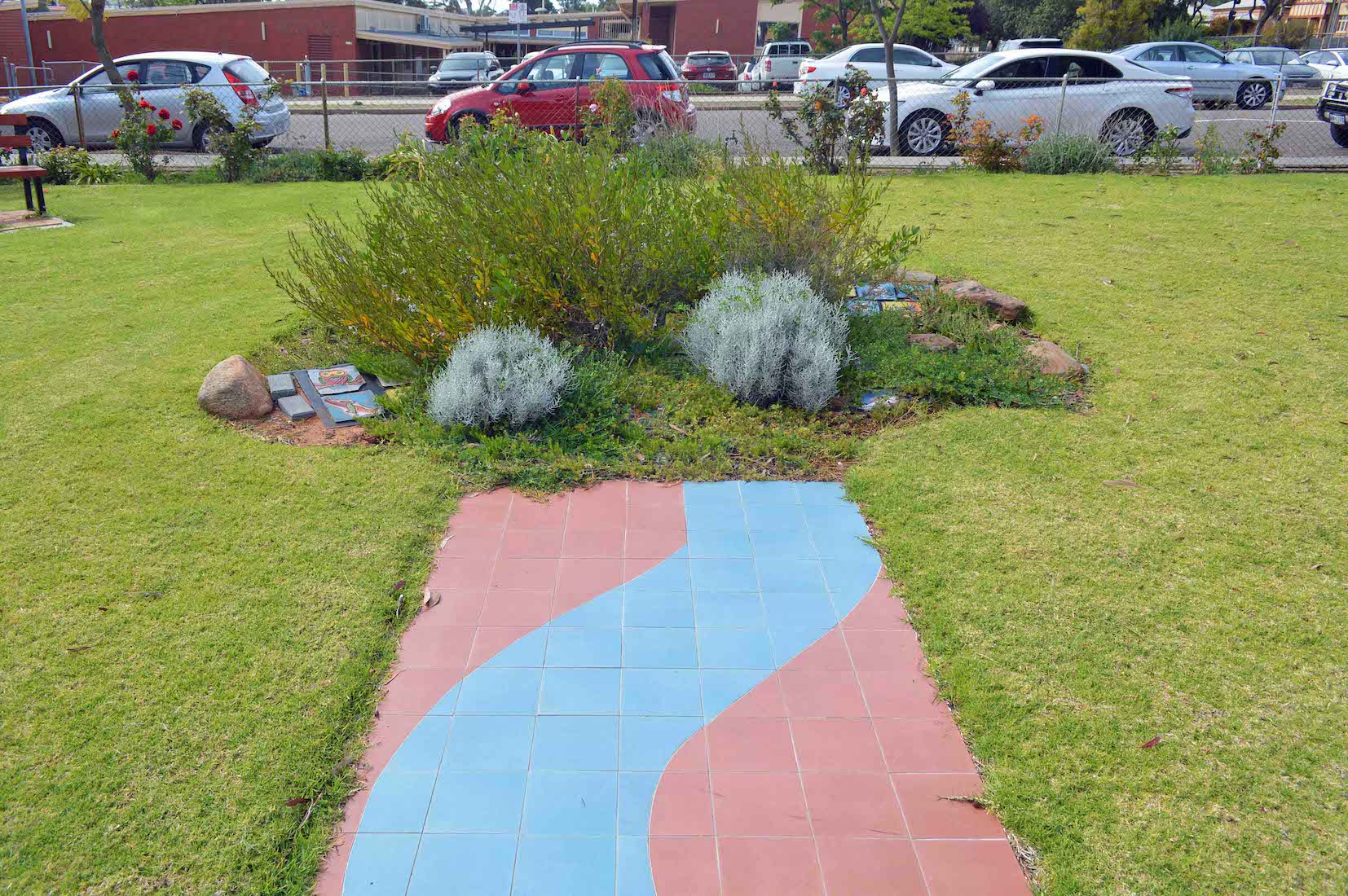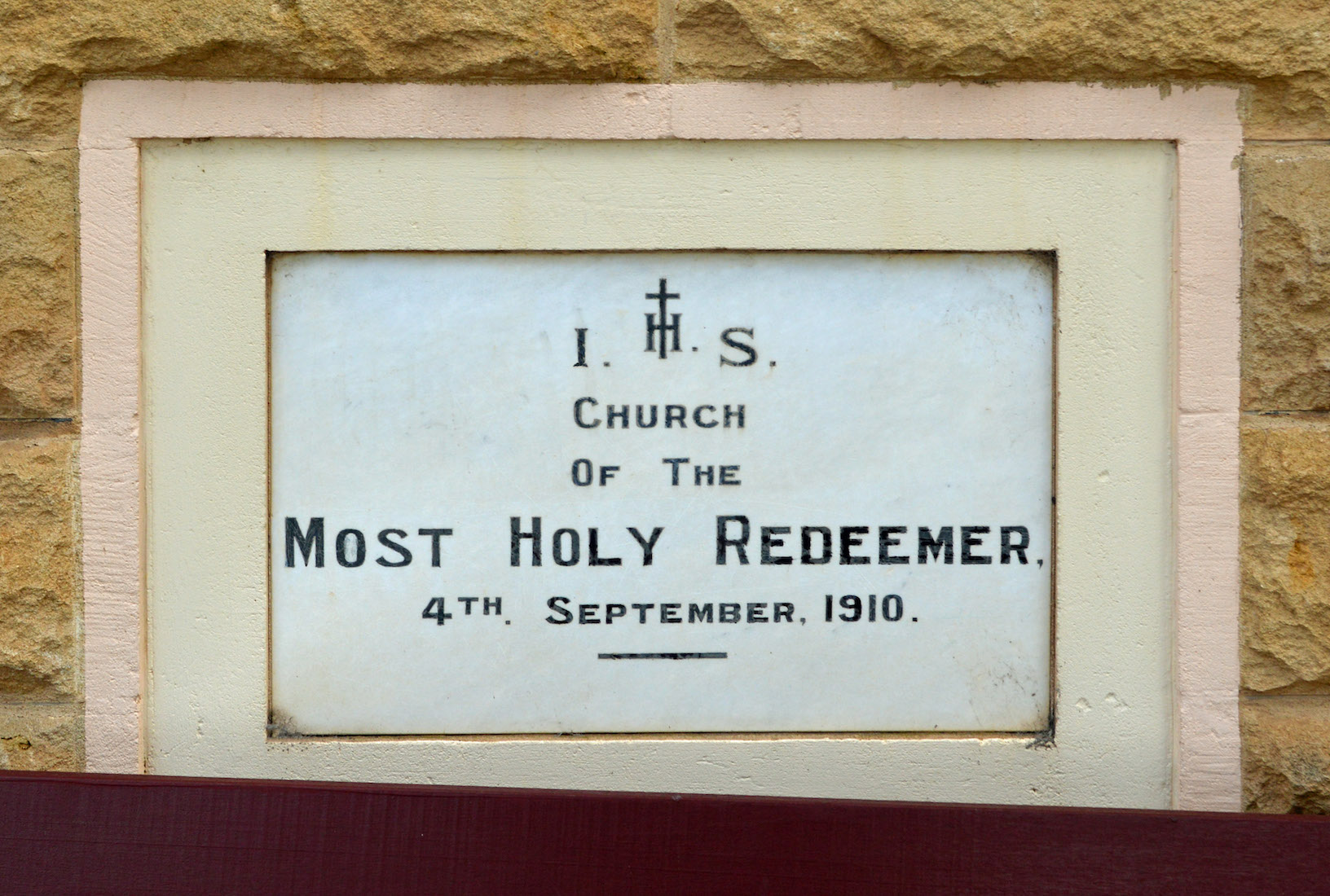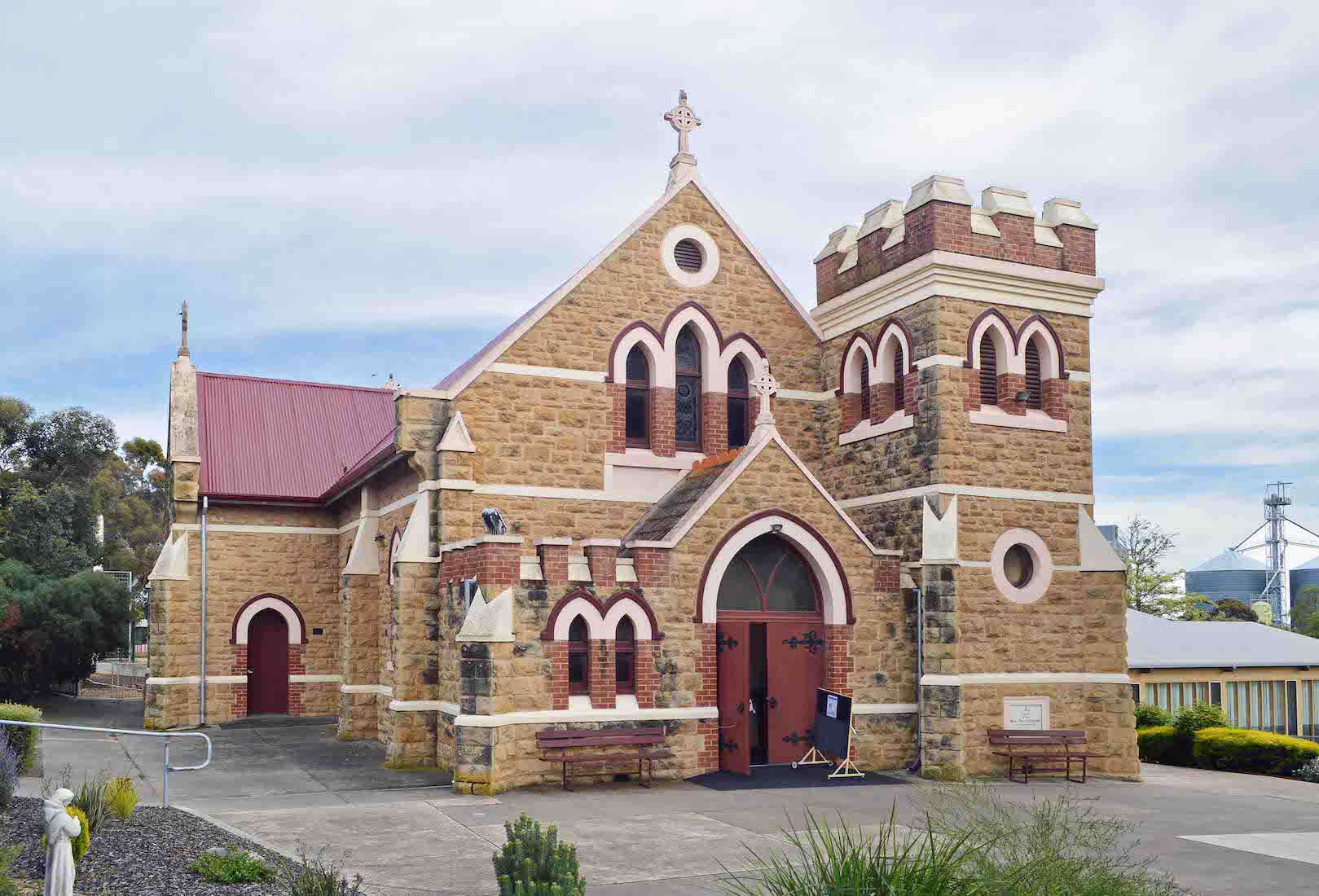
We begin our exploration near St Francis in the Northwest garden. The Church is constructed of local sandstone, and is quite charming. At the top of each gable stands a Celtic cross – essentially a latin cross with a circle surrounding the intersection. It is thought that the circle represents the sun – source of physical light and warmth.
2. SIGN
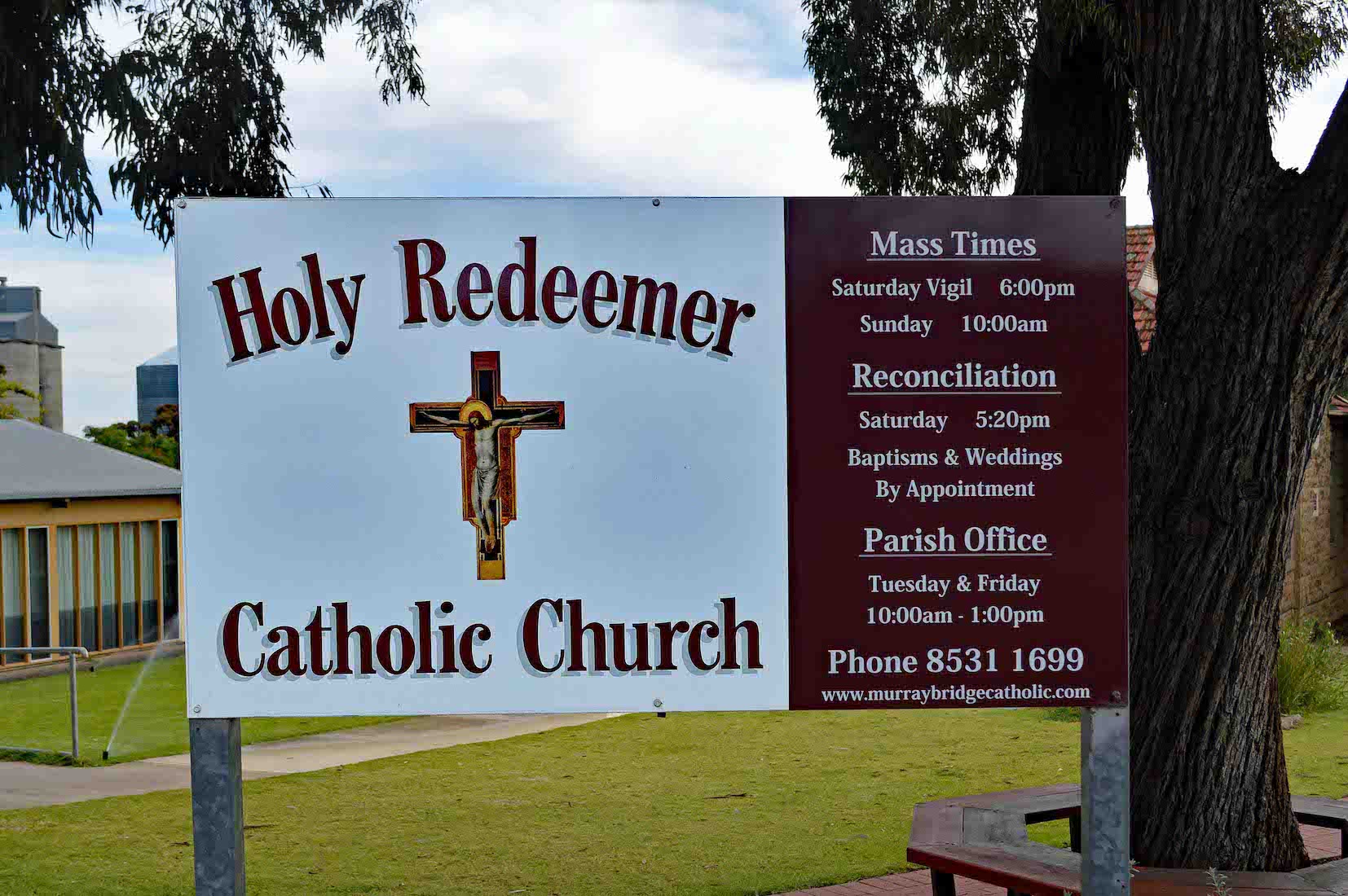
The attractive sign advertises the name of the Church – ‘Holy Redeemer’ – or in some places, ‘Most Holy Redeemer’. We note that the Congregation of the Most Holy Redeemer is a much wider religious congregation of the Catholic Church dedicated to missionary work. It seems likely that this congregation forms part of that wider grouping.
3. WALKING AROUND
We walk around the Church in a clockwise direction. We notice the wide castellations of tower and narthex, as well as the regular, solid buttresses supporting the walls. There is smart use of the red bricks: this is a Church where a lot of thought has been put in to make the building strong and attractive.
4. CORNER GARDEN
There is a simple, well-tended garden in the Northwest corner of the property, containing a statue of St Francis, and two plaques.
5. ST FRANCIS OF ASSISI
St Francis is shown befriending a dove. Francis of Assisi (1181 or 1182 – 1226), is one of the most venerated religious figures in Christianity. Francis has been described as a nature mystic: one who finds God in the vast and beautiful fields of nature. Everything spoke to Francis of the infinite love of God. ... By surrendering himself and daring everything for love’s sake, the earth became his home and all creatures his brothers and sisters.
6. GARDEN PLAQUES
There are two plaques in this garden, a prayer of St Francis and a reflection from Pope Francis. Together they present a thoughtful message concerning our world in crisis today.
7. APSE
We walk alongside the Northern vestry, and come to the castellated Eastern apse which contains the sanctuary. The apse is a common feature in many Christian churches and cathedrals.
8. EASTERN WALL
During our visit to the apse, we might notice two guardian owls, and a brave visiting dove! This back corner also reveals several air conditioning units and a water tank – wise precautions in a part of the country which can be fiercely hot in summer.
9. TOWER AND GABLE
We follow along the South wall, around the tower, and stop to admire the gable on the West wall. There is a lot to appreciate about this Church!
10. SOUTH SIDE VIEW
There is a large grassed area on the Ind Street side of the Church, and we can stand back for a good view. The square tower leads one to ask about the possibility of Church bells, but I can find no reference. The building to the right of this view houses the Parish Office.
11. SOUTH GARDEN
Located in the middle of this grassy area is a curious monument. A paved area representing a flowing river leads to (or from?) a garden bed with ground cover and small shrubs. The garden also contains a number of colourful picture tiles, mostly with a ‘nature’ theme.
12. WEST WALL AND FOUNDATION STONE
We have now completed our circumnavigation of the Church, and we face the West door. To the right is the Church’s foundation stone with the text: ‘IHS Church of the Most Holy Redeemer, 4th. September. 1910.’ It is now time for us to enter the Church. Unfortunately there is a service in progress, and I am unable to photograph the interior. I did contact the Church beforehand to arrange a suitable time, but received no response. Perhaps on a future visit to Murray Bridge I will be able to complete this site.
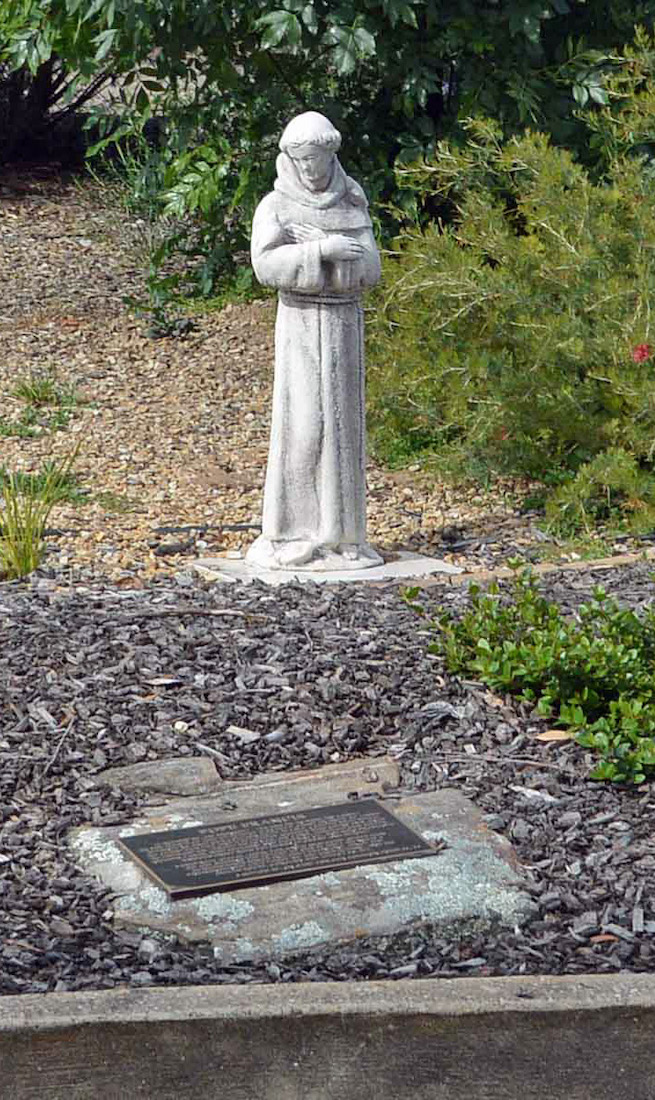
CONCLUSION
I hope you have enjoyed visiting the Church of the Most Holy Redeemer with me. It is certainly very picturesque.
I am grateful to my wife Margie who came to Murray Bridge with me, and who has proof-read the text of this site. I would be delighted to hear from anyone who can add to, or further correct, the information presented here.
The Church has its own website with link:
https://murraybridgecatholic.com
The photographs which appear on this site are all mine, and can also be found in higher resolution at:
https://www.flickr.com/photos/paulscottinfo/albums/
Paul Scott Site created 10/2021

